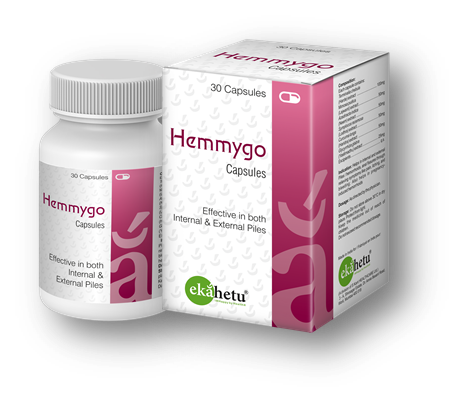Terminalia chebulaT. chebula has been used extensively in the indigenous system of medicine (Ayurvedic) for its homeostatic, antitussive, laxative, diuretic and cardiotonic activities. Chebulagic acid from T. chebula is responsible for anti-inflammatory activity, where Chebulagic acid inhibits COX and 5-LOX. T. chebula is useful in hemorrhoids and helps in reducing the size of pile mass and bleeding.
Mimosa pudicaM. pudica has styptic qualities to stop bleeding and therefore, considered as invaluable for bleeding hemorrhoids. A topical paste made from M. pudica leaves has been known as a hemorrhoid therapy since at least the 16th century. Various animal and human studies concluded that the alcoholic extract of M. pudica showed reasonable anti‐inflammatory activity that can be further utilized as a bioactive for pharmaceuticals for the management of hemorrhoids / piles.
Azadiracta indicaAs per ethano-medicinal usages, the decoction of the tender branches of A. indica (Neem) has been proven very effective for the management / relief in conditions like piles and mild constipation. The paste of stem bark of neem is commonly used on wound and scar for rapid healing and found effective through significant wound healing property in excision as well as incision wound animal model.
Symplocos racemosaS. racemosa (Lodhra) is a potent Ayurvedic herb used to improve digestion and to firm the body. Lodhra is useful in treating bleeding piles and helps to arrest haemorrhage. It also reduces pain and edema. Lodhra has long been used to mitigate inflammation which improves the complexion and is helpful for hemorrhoids.
Curcuma longaTurmeric is known for a number of medicinal properties such as antimicrobial, anti-inflammatory, antioxidant, immune-stimulatory etc. These properties are inflicted on turmeric by a variety of biological compounds such as Curcuminoids, Vitamins (B & C), Sodium, Potassium, Iron, Proteins, α-Linolenic acid, Essential oils etc. The inflammation and itching due to anal fissures and hemorrhoids can be overcome by using turmeric.
Glycyrrhiza glabraG. glabra (Yastimadhu) contains β-glycyrrhetinic acid, which is anti-inflammatory agent and helps in reducing the venous inflammation and helps in correcting anorectal piles disorder. It is also mild laxative and advised to patients suffering from constipation.

